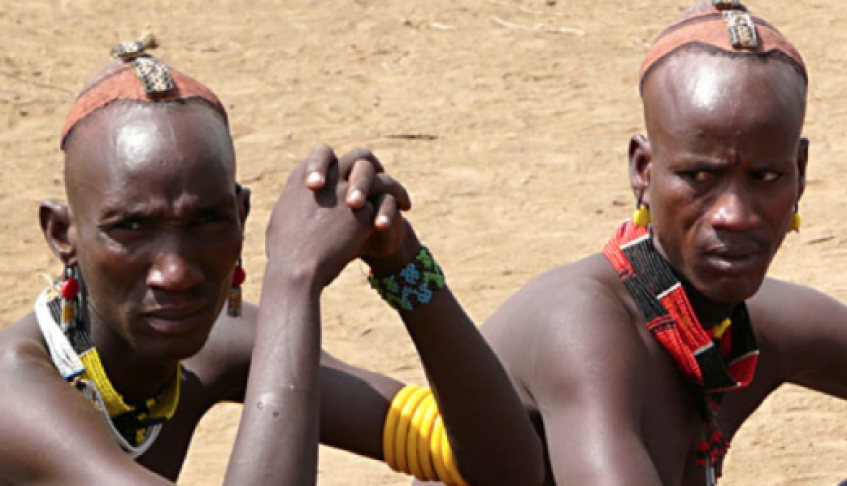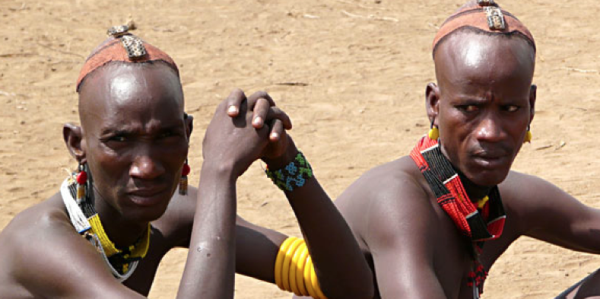
From the Expert: Dr. Mark Cucuzzella On Single Focus Running Studies
running science14 February 2013
A recent study of less than 40 East African tribesman showed that most land on their heels while running at a slow pace on a compliant surface (not pavement) and when they sped up most changed their pattern to midfoot landing. Some in the media then grabbed onto this small sample and somehow arrived at the following “conclusions”:
• Barefoot running is not a good thing…the fad is over
• This supports cushioned running shoes with elevated heels
 The study looked at the Daasanach who are a pastoral tribe living in a remote section of northern Kenya. According to the New York Times, “Unlike some Kenyan tribes, the Daasanach have no tradition of competitive distance running, although they are physically active. They also have no tradition of wearing shoes.”
The study looked at the Daasanach who are a pastoral tribe living in a remote section of northern Kenya. According to the New York Times, “Unlike some Kenyan tribes, the Daasanach have no tradition of competitive distance running, although they are physically active. They also have no tradition of wearing shoes.”
Let’s see now, the African subjects were running barefoot; but people land in different ways, and as you speed up you get more forward on your foot. Not surprising as anyone who runs, coaches, researches, or even observes runners knows . There was absolutely no reference or relevance to injuries or footwear effects in this study. These happy tribesman were jogging slowly in their bare feet as they do daily, and I doubt any of them had or ever will have running injuries.
They were active tribal people (not habitual runners) running at a jogging pace.
This study reinforces what many of us in the Running Medicine field have been voicing for a long time. People are focusing on one variable and most often it is footwear or what part of your foot hits the ground first, and ignoring the other 90% of the equation.
Runners get hurt by running. Most often by running too much, too fast, and often with poor strength and movement mechanics. Humans are also highly variable and it is doubtful any of us does or should land in the same way every time, on every surface , and at every speed.
No one of credibility in the professional field is telling runners to land on their forefoot or ball of foot in isolation, nor suggesting for folks to chuck their shoes. What is interesting in studies is they rarely agree on what a forefoot or midfoot strike actually is. A true forefoot strike is probably along the base of the 5th metatarsal (outside edge of foot), not the ball of the foot or metatarsal heads.
As an often barefoot runner I land different on different surfaces at different speeds. On soft golf courses and easy pace, I roll nicely from the heel. Running fast on concrete, I need to engage the foot more as shock absorber and to prestretch the takeoff muscle contraction.
Remember the key is running elastic– landing close to your center of mass, and engaging the posterior muscles (glutes).
I still stand behind what we filmed here as the Principles of Natural Running. Not where do we say that runners should aim to land on the ball of the foot.
Running barefoot in itself will not change most of the other variables contributing to poor form and injury, but it does have a role in the relearning process.
See our Stability and Mobility section on the Natural Running Center, and notice where the real improvements occur and do lots of progressive drills to rewire the movement pattern.
Another finding reinforcing what we know is that as the runners ran faster, they landed on their forefoot more often. This is normal and necessary.
Everyone’s form changes when they go from 9:00 per mile to 5:00 per mile. As one moves faster it is efficient to eccentrically stretch the triceps surae the load the Achilles spring. This is like jumping: .load, trigger, fire.
Instructing an 9:00 mile runner to emulate the 5:00 mile biomechanics is short sighted and one should not suggest it.
My personal take-home messages from this recent study of African tribesman and the “barefoot” attention that resulted from it is as follows:
• Do not focus on footstrike in isolation
• Gradually increase cadence
• Mix it up….surfaces, shoes, barefoot,
• Use your glutes and extend the hips from a stable core
• Watching a barefoot runner land on their heel does not mean that we were not born to run barefoot or that shoes need a cushioned heel.
• Have fun!
Click here to visit the Natural Running Center!

